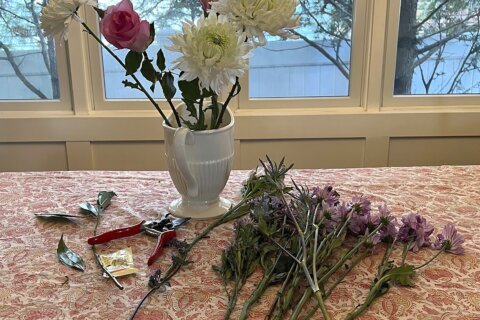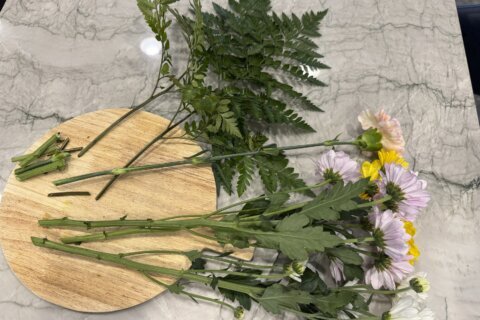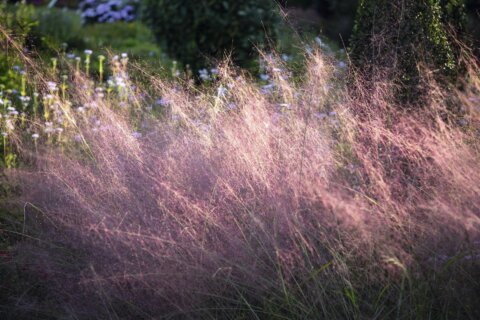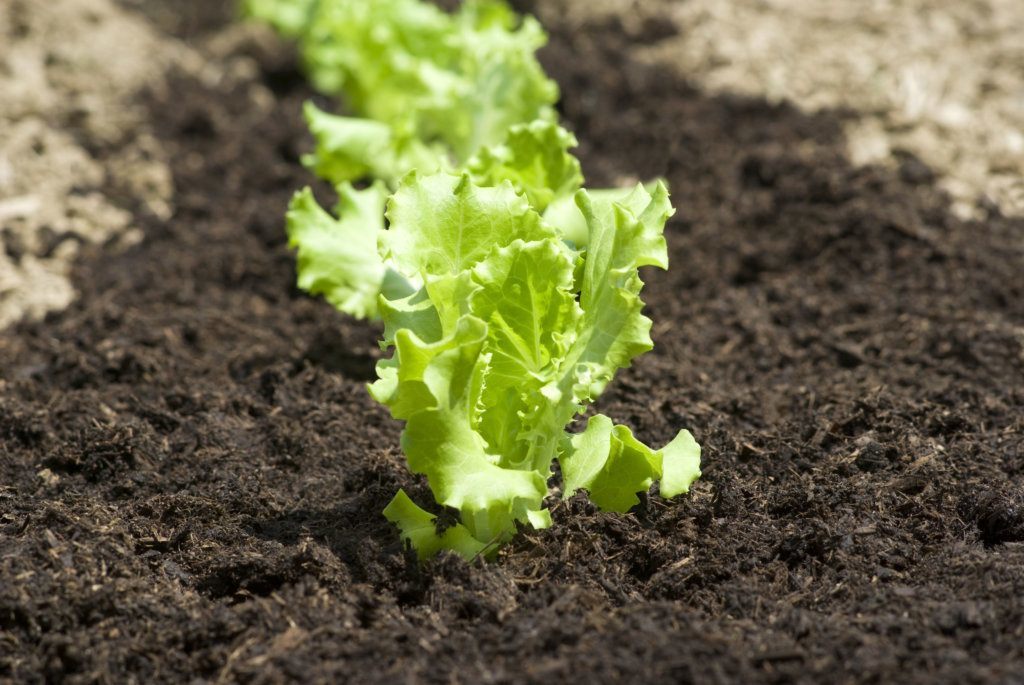
Gardening is usually associated with spring and summer, but fall is actually the ideal time to take advantage of the cooler weather and plant your garden for next year.
“The easiest thing, most rewarding thing, is to plant spring bulbs. We call them spring bulbs because they sprout and flower in the spring, but you have to plant them in the fall. And the ideal time for doing that in the greater D.C. area is between Halloween and Thanksgiving. So even if you’re only getting started now, you won’t be late,” said Mike McGrath, host of the internationally syndicated public radio show “You Bet Your Garden.”
According to the Merrifield Garden Center, which has three locations in Virginia, aster, goldenrod and tickseed are hardy perennials that can be planted this time of year. (For the novice, perennials are plants that come back every year, while annuals only live for one growing season.)
Some popular choices to plant in the fall include daffodils, tulips, crocus, hyacinth, hydrangeas, pansies and mums.
Pansies aren’t for wimps
McGrath has a strong opinion on those last two.
“I recommend that you avoid the over-cultivated, over-fertilized mums … that to me always looked like a bathing cap from the ’50s, and instead get yourself a flat of pansies,” he told WTOP.
“Although they’re associated with weakness, pansies are the toughest flower of them all. You plant them in the fall and they will bloom all fall long, they bloom all winter long — fresh blooms I’m talking about — and almost always survive the winter and come back really strong in the spring. And the flowers are edible. So you can take a 50-cent salad and make it look like a million bucks with five or six pansy flowers on top.”
McGrath said fall is also a great time to plant new trees and shrubs.
“They are on sale at garden centers because they have to move that stuff out quickly to get ready for the giant inflatable Homer Simpson-looking Santa Claus displays. So even spring bulbs at this point are probably going to be marked down,” he said.
“I’ve seen a bunch of local nurseries in my area already offering 40% off new trees and shrubs. And the nice thing is trees and shrubs that are planted in the fall have a much better survival rate than the same plants installed in the spring — because they don’t have to fear that upcoming wonderful D.C. heat and humidity right after they’re planted.”
Setting down roots
In fact, many experts say fall is a better time to plant than spring because while the air might be cooler, the soil is still warm, which encourages root growth.
“While the same plant planted in spring gets a slow start due to cool soils, the fall-planted plants are becoming well established,” Meadows Farms Nurseries & Landscape, which has locations in Virginia and Maryland, advises on its fall gardening resources online page. “When summer finally arrives, the fall-planted plant is far better equipped to deal with heat and drought, largely due to its well-established root system.”
The mighty daffodil
McGrath said that daffodils in particular have a dual benefit: They’re colorful to people but toxic to the critters trying to chew up your gardens
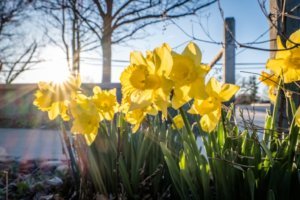 “So no animal is going to bother them. Squirrels may dig them up but they won’t eat them. And even the flowers are toxic so deer tend to avoid those in the spring,” he said, noting that daffodils also sprout early, stay in bloom for a long time and require no care.
“So no animal is going to bother them. Squirrels may dig them up but they won’t eat them. And even the flowers are toxic so deer tend to avoid those in the spring,” he said, noting that daffodils also sprout early, stay in bloom for a long time and require no care.
“Tulips, however, are nutritious and delicious. So if you want to plant a bed of tulips, you have to find a whole bunch of dog hair first. If you mulch the bed with dog hair, that will keep evil squirrels away,” McGrath said.
He added that gardeners should “avoid this stupid, horrifying trend of mulching with shredded-up [wood] pallets dyed the color of a Burger King that provides perfect cover for mice and moles and other pests that would gladly eat the roots of your plants or even the bark over winter.”
Hot peppers for squirrels?
Angel Ortiz, retail manager at Greenstreet Gardens in Alexandria, Virginia, said the shop sells several organic products that help repel squirrels and other animals without hurting them.
“There’s also a product from Bonide that we carry a lot and that helps too. Its ingredient [is] a hot pepper that they don’t really like,” he told WTOP, adding that blood meal — a dried, inert powder made from animal blood — can be effective as well.
A bumper crop
Ortiz said that now is a good time to plant not only flowers, trees and shrubs, but also seeds for vegetables like cabbage and kale.
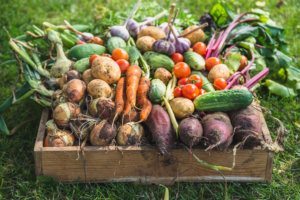
Fall and winter act like a giant refrigerator for your vegetable crops, giving them time to mature for the spring.
Certain vegetables, though, mature in the fall, such as turnips, beets, carrots, onions and kale. But if you plant them too late in the fall, they won’t be ready to eat before the winter, so plan ahead next year and plant fall vegetables in the summer for an autumn harvest.
And don’t assume you have until the first frost to pick your fruits and vegetables, advised McGrath, who said frost is an arbitrary cutoff point.
“None of these tropical plants that we rely on for food in our summer gardens can survive temperatures 40 and below,” he said. “It’s not like the plants are out there, ‘Oh, it’s 34 [degrees], yada yada, just two more degrees.’ No, they’re going, ‘What happened? We’re not in the tropics any more!’ The plants of summer are the plants of summer. Fall is an entirely different time to plant.”
McGrath advised gardeners to go ahead and rip out any green fruits or veggies, bring them inside and place them in a dark, airy place (not a sunny windowsill) to ripen. A kitchen counter will do the trick.
“This game is a lot simpler than people think. But they overcomplicate it and they’re the victims of excessive marketing,” he said. “As with all things in life, interesting-looking things that you really don’t need may hurt.”
Trust the plants, not the marketing
McGrath said that applies to mulch, which many gardeners assume they need to keep plants warm in the winter.
“There was never a reason for this marketing ploy, which kills more plants than people do,” he said, noting that mulch offers tics and mice a nice home.
A better way to improve the health of your soil, he said, is compost, which can be made of any decomposed organic material, including those autumn leaves that litter your backyard. But save it for the spring, McGrath recommends.
“The best time to improve your soil is in the spring. And really if you just swear off chemical fertilizers and herbicides, you’re doing your soil a great favor. In the spring, get some high-quality compost and spread it and introduce it on top of the ground,” McGrath said. “That’s it — improve the soil. The plants know how to take care of themselves. Trust the plants.”
Correction: This story has been updated to reflect that cabbage and kale are good to plant in the fall.


